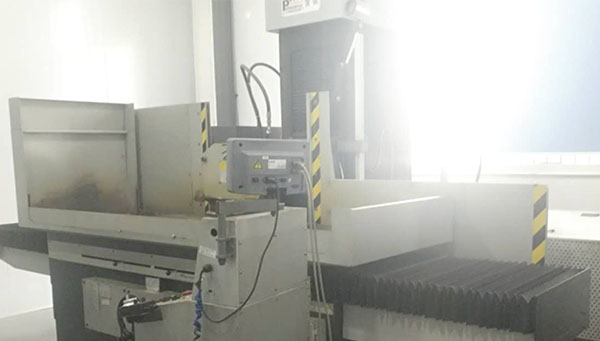Essential Maintenance Tips for Prolonging Grinding Machine Life and Performance
At Elite, a leading plastic injection mold manufacturer in China, our commitment to producing high-quality molds and molded parts is backed by our use of advanced grinding machines. To ensure that these machines operate at peak efficiency and provide consistent precision, regular maintenance is crucial. Proper maintenance not only prolongs the life of grinding machines but also ensures optimal performance, reducing downtime and the need for costly repairs. In this article, we will share essential maintenance tips to help keep grinding machines operating smoothly and efficiently.
The Importance of Regular Maintenance for Grinding Machines
Grinding machines play a key role in producing high-precision components for plastic injection molds. Whether it’s achieving tight tolerances or delivering a fine surface finish, these machines are indispensable in mold manufacturing. Without regular maintenance, the performance of grinding machines can degrade over time, resulting in reduced accuracy, increased wear, and possible machine failure.
Key Benefits of Regular Maintenance:
- Extended Machine Life: Proper care and maintenance reduce wear and tear, extending the overall life of the machine.
- Improved Precision: Regular calibration and cleaning ensure that grinding machines continue to deliver high-precision results.
- Minimized Downtime: Preventive maintenance helps identify potential issues before they become significant problems, reducing machine downtime.
- Cost Savings: Preventing major breakdowns lowers repair costs and minimizes production delays.
Essential Daily Maintenance Tasks
Daily maintenance tasks are critical for keeping grinding machines in top condition and ensuring that minor issues do not develop into costly repairs. At Elite, we ensure that all daily maintenance tasks are performed diligently to maintain the performance and accuracy of our machines.
1. Clean the Grinding Machine After Each Use
- Why It’s Important: Dust, debris, and material residues from the grinding process can accumulate on the machine, causing blockages or interfering with the accuracy of future operations.
- What to Do: After each use, thoroughly clean the machine, including the grinding wheel, bed, work area, and any moving parts. Use a brush or compressed air to remove debris from hard-to-reach areas.
2. Check and Refill Lubrication Levels
- Why It’s Important: Proper lubrication reduces friction between moving parts, preventing wear and ensuring smooth operation. Insufficient lubrication can lead to overheating and accelerated wear on critical machine components.
- What to Do: Check the lubrication system daily and refill any oil or lubricant as needed. Pay close attention to the slides, spindles, and lead screws to ensure these critical areas are adequately lubricated.
3. Inspect the Grinding Wheel
- Why It’s Important: The grinding wheel is one of the most important components of the machine. A damaged or worn wheel can result in poor surface finishes, reduced precision, and even safety hazards.
- What to Do: Inspect the grinding wheel daily for any signs of wear, cracks, or other damage. If the wheel is worn or damaged, replace it immediately to ensure optimal performance and safety.
4. Ensure the Workpiece is Securely Clamped
- Why It’s Important: A loose workpiece can cause inaccurate grinding results or even damage the machine.
- What to Do: Before starting the grinding process, always ensure the workpiece is securely clamped to the worktable. Check the clamping mechanism for any signs of wear or looseness and adjust as necessary.

Weekly Maintenance Tasks
Weekly maintenance tasks involve more in-depth inspections and adjustments to ensure that the grinding machine continues to operate with precision. These tasks help prevent long-term wear and ensure that the machine is running efficiently.
1. Inspect and Calibrate the Machine
- Why It’s Important: Over time, grinding machines can lose accuracy due to vibrations, regular wear, and mechanical shifts. Periodic calibration ensures that the machine remains within the required tolerances.
- What to Do: Inspect the machine’s critical components, such as the spindle, grinding wheel alignment, and table movements. Use precision measuring tools to check the machine’s accuracy and adjust any components that have shifted out of alignment.
2. Check the Coolant System
- Why It’s Important: Coolant helps prevent overheating during the grinding process, ensuring consistent performance and reducing wear on both the grinding wheel and workpiece.
- What to Do: Ensure that the coolant levels are adequate and that the coolant is clean and free from contaminants. If necessary, drain and replace the coolant to maintain its effectiveness.
3. Inspect the Drive Belts and Pulleys
- Why It’s Important: The drive belts and pulleys transfer power from the motor to the spindle, and any wear or misalignment can affect the machine’s performance.
- What to Do: Inspect the drive belts for signs of wear, such as cracking or stretching, and check the pulleys for proper alignment. Adjust or replace the belts and pulleys as needed to ensure smooth and consistent power transmission.
Monthly Maintenance Tasks
Monthly maintenance tasks focus on the overall health of the grinding machine and involve more thorough checks of the machine’s components. Performing these tasks helps to identify potential problems before they become more serious.
1. Balance the Grinding Wheel
- Why It’s Important: An unbalanced grinding wheel can cause vibrations, resulting in poor surface finishes and reduced precision.
- What to Do: Test the balance of the grinding wheel and re-balance it if necessary. This will help maintain the accuracy of the machine and ensure a smooth grinding process.
2. Inspect and Test Electrical Systems
- Why It’s Important: The electrical systems in a grinding machine, including motors and control systems, are essential for smooth operation. Electrical issues can cause malfunctions or machine failure.
- What to Do: Inspect the electrical systems for any signs of wear, loose connections, or damaged wires. Test the machine’s controls, motors, and emergency stop systems to ensure they are functioning correctly.
3. Examine and Clean Bearings and Gears
- Why It’s Important: Bearings and gears are subjected to continuous stress during the grinding process. Over time, they can wear out or accumulate dirt, leading to reduced machine performance.
- What to Do: Inspect the bearings and gears for any signs of wear or misalignment. Clean them thoroughly and replace any worn components to ensure smooth operation.
Long-Term Maintenance and Professional Servicing
In addition to regular daily, weekly, and monthly maintenance tasks, long-term maintenance is crucial for ensuring that the grinding machine continues to operate at peak performance. Periodic professional servicing helps identify potential issues that may not be visible during routine checks.
1. Schedule Professional Servicing
- Why It’s Important: Professional technicians can perform in-depth inspections and servicing to identify problems that may not be visible during routine maintenance. They also have specialized tools to measure and adjust machine components with high precision.
- What to Do: Schedule professional servicing at least once a year. During this servicing, have the technician check all critical components, including the spindle, bearings, motors, and control systems, to ensure the machine is performing optimally.
2. Keep Detailed Maintenance Records
- Why It’s Important: Accurate maintenance records allow you to track the machine’s performance over time, identify recurring issues, and ensure that maintenance tasks are performed on schedule.
- What to Do: Keep a detailed log of all maintenance activities, including daily, weekly, and monthly tasks. Record any repairs, replacements, or adjustments made to the machine, as well as the date of professional servicing.
Conclusion
At Elite, the grinding machines we use play a critical role in the production of high-precision plastic injection molds and molded parts. By following a rigorous maintenance schedule that includes daily, weekly, monthly, and long-term tasks, we ensure that our machines continue to operate at peak performance, providing accurate and consistent results. Regular maintenance helps us reduce downtime, minimize repair costs, and extend the lifespan of our machines, ultimately allowing us to deliver superior-quality products to our clients.
If you are seeking a reliable plastic injection mold manufacturer that prioritizes precision, quality, and efficiency, Elite is your trusted partner. Contact us today to learn more about our manufacturing capabilities and how we maintain top-quality performance in our mold production processes.
Related news
Our Certificates
By co-operating with Elite Mold, you have selected one of the most reliable ISO 9001 certified plastic mold manufacturer, Elite Mold as a plastic injection mold manufacturer specializing in plastic injection mold and supplying plastic injection molding services for plastic mold design, prototype makings, mold flow analysis, precise machining, OEM services, ODM services and so on, building custom plastic injection molding. We are committed to enhance the Process optimized and quality of service, shorten lead time and assist in lowering inventory, by providing new products every year to bring in continuous and higher profits for our clients. The ability to produce mold at the International standard, strong engineering and mold design capability, aggressive delivery, competitive pricing and business integrity continues to be the success factor of Elite Mold.










